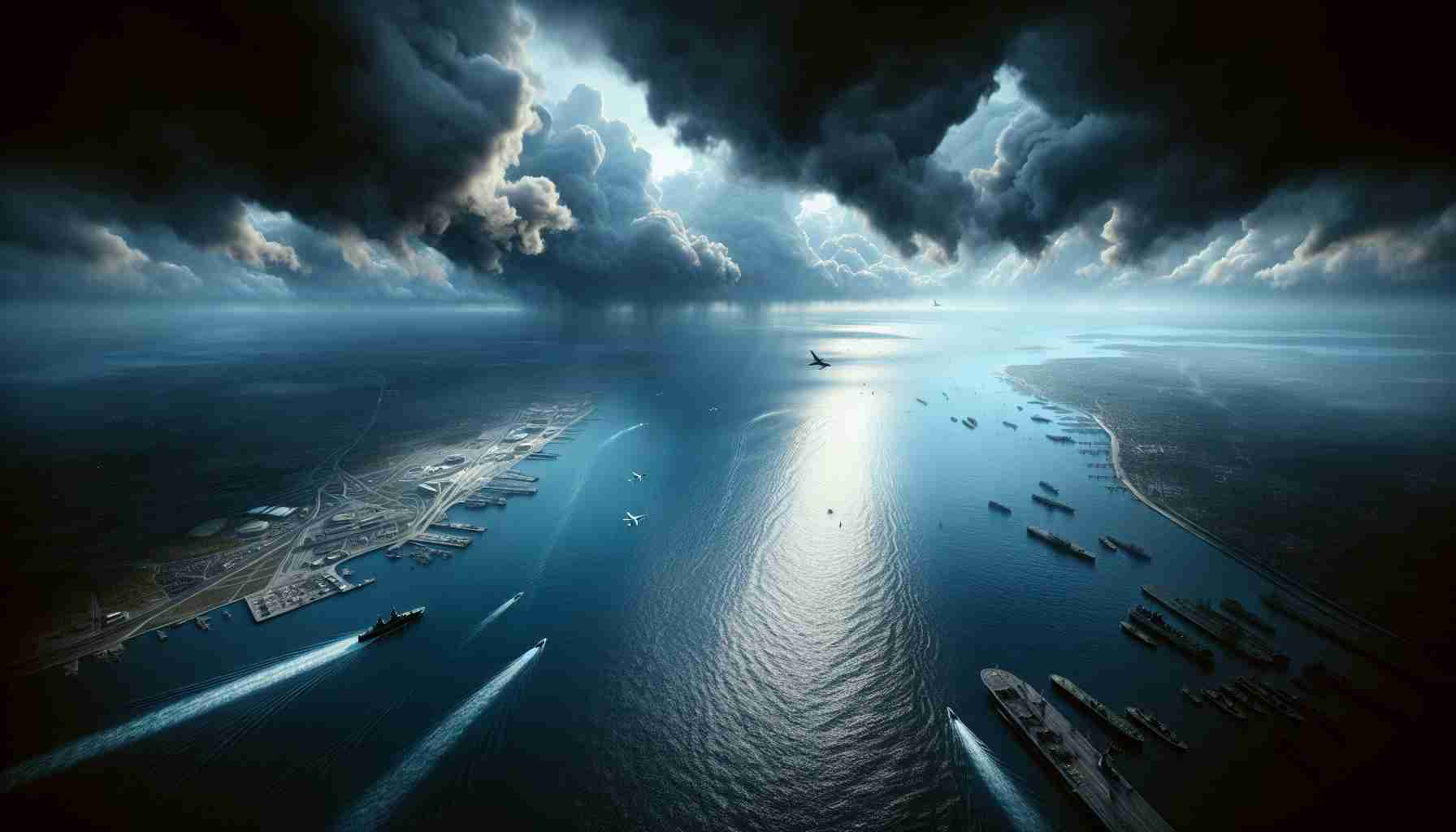On Sunday, the Taiwan Ministry of National Defence (MND) reported significant movements of Chinese military forces near Taiwan, escalating regional tensions. The MND announced that eight aircraft from the People’s Liberation Army (PLA) and seven vessels from the People’s Liberation Army Navy (PLAN) were detected operating close to the island nation.
Intrusions Across the Median Line
Among these activities, four PLA aircraft crossed a crucial boundary, the median line of the Taiwan Strait, intruding into Taiwan’s northern and southwestern Air Defence Identification Zones (ADIZ). This line serves as an unofficial buffer zone between China and Taiwan. Taiwan’s defense forces have assured that they are vigilantly monitoring these incursions and responding as necessary to protect their airspace.
Rising Frequency of Chinese Presence
The incident on Sunday followed an earlier detection of 25 Chinese aircraft and seven vessels around Taiwan on Saturday. Particularly alarming is that 13 of those aircraft penetrated the southwestern and southeastern parts of Taiwan’s ADIZ.
Bolstering Defenses
In light of these developments, Taiwan is reinforcing its maritime borders. Taiwanese President Lai Ching-te recently participated in the inauguration of the Shuei-Sing Barracks, a new facility for the Navy’s Underwater Operations Unit, aimed at enhancing defensive readiness.
International Support
Amidst these tensions, Taiwan has received vocal backing from international allies. Following a meeting in Darwin, Australia, defense ministers from the United States, Japan, and Australia reiterated their commitment to peace and stability in the region, underscoring global concern over escalating activities in the Taiwan Strait.
Innovations and Geopolitical Intrusions: How Regional Tensions Spur Technological Advancements
Emergence of Cutting-Edge Surveillance and Defense Technologies
The escalating military activities in the Taiwan Strait have inadvertently accelerated the development and deployment of advanced surveillance and defense technologies. In response to Chinese military maneuvers, Taiwan is integrating cutting-edge technologies to improve its threat detection and response capabilities. These technologies include artificial intelligence-driven radar systems, enhanced satellite imagery, and unmanned aerial vehicle (UAV) patrols capable of real-time data analysis. Such advancements are not only pivotal for Taiwan’s national security but also signify a new era in defense technology which may influence global trends.
Interesting Facts and Controversies
While China’s military activities highlight the need for robust defense mechanisms, they also raise controversial discussions around sovereignty, technological dependencies, and espionage risks. For instance, the deployment of drones for aerial reconnaissance generates debate about the ethical implications of AI in warfare and civilian oversight of military operations. Moreover, the rapid integration of foreign-developed technologies raises concerns about cybersecurity vulnerabilities. It poses the question: Is Taiwan’s strategic alliance with Western powers translating to dependency on their technology?
Advantages and Disadvantages
The current geopolitical tensions drive several advantages in technology development. Taiwan’s focus on technology positions it as a leader in defense innovation, potentially bolstering its economic growth through tech exports and collaborations. However, the disadvantage lies in the heightened risk of an arms race in the region, which could destabilize long-term peace efforts and redirect resources away from essential civilian and social infrastructure development.
Related Questions and Their Answers
How do these regional tensions influence global cyber defense strategies?
The intensifying conflict in the Taiwan Strait necessitates advancements in cyber defense strategies globally. This shift focuses on developing more robust cybersecurity frameworks to protect critical infrastructure and deter cyber attacks, which have become primary tools for modern warfare.
Can Taiwan’s advancements in defense technologies affect global markets?
Yes, as Taiwan invests in and produces advanced defense technologies, there can be significant impacts on global markets, especially if it becomes a key exporter of these innovations. This shift might attract international investors and could lead to strategic partnerships with other nations, enhancing Taiwan’s geopolitical influence.
How might AI-driven technologies redefine warfare?
AI-driven technologies promise to redefine warfare by improving precision, operational efficiency, and threat prediction. However, challenges remain, especially regarding the ethical use of such technology in combat and ensuring human oversight.
For further insights into global defense and technology trends, visit the BBC or CNN.
Conclusion
Caught between rising tensions and technological progress, Taiwan faces both challenges and opportunities. As it bolsters its defense capabilities, it also plays an essential role in the broader dialogue about technology’s role in modern warfare and diplomacy. As the world watches, the unfolding situation in the Taiwan Strait could open new discussions on the balance between military preparedness and international peace initiatives.



















